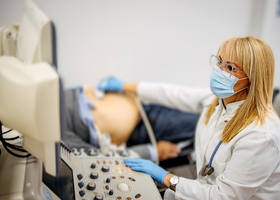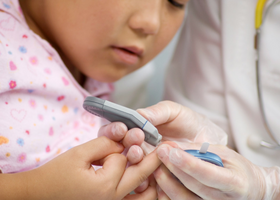Rare Diseases and Disorders
The Canadian Organization for Rare Disorders (CORD) defines a rare disease as a condition that affects fewer than 1 in 2,000 people. There are over 7,000 known rare diseases that combined affect one in 12, or nearly 3 million, Canadians, two thirds of them children. Some common examples of rare diseases include cystic fibrosis, Huntington’s disease, and muscular dystrophy. Many rare diseases have no known cure, fewer than 10 percent of rare diseases have any treatment, and they can be debilitating or life-threatening.
Rare diseases and disorders pose a significant collective economic burden. Key challenges driving the cost burden include delayed diagnosis, direct medical costs, and indirect and non-medical costs such as paid personal care, home accessibility modifications, lost earnings from leaving the labor market, and reduced productivity as a result of absenteeism. Rare disease drugs can cost from $100,000 to more than $2 million per person per year. These costs far exceed what patients and families can afford, and place significant pressure on public and private plans, and the healthcare system.
Stem Cell Network researchers are tackling these challenges by working to better understand and better treat rare diseases and disorders such as cystic fibrosis, muscular dystrophy, limbal stem cell deficiency, and rare heart diseases. From 2019-2025, SCN has committed over $3.8 million in research funding for rare diseases and disorders.
Cystic Fibrosis
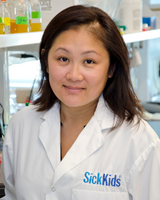 Determining the role of the CFTR gene in the developing human lung
Determining the role of the CFTR gene in the developing human lung
Dr. Amy Wong, Hospital for Sick Children
Cystic fibrosis (CF) is a fatal, genetic multi-organ disease that mainly affects the lungs and digestive system. Roughly 4,300 Canadians live with CF. The severity of disease varies from person to person; however, persistent lung infections lead to the loss of lung function and eventually death. Children under the age of six are not eligible for current treatments targeting the main CF genetic mutation. Clinicians have been advocating for the early treatment of CF in children to prevent extensive and irreversible lung damage over time. The challenge has been the lack of a model to study the impact and role of the CFTR gene in lung development. Dr. Wong has developed the first human lung model in a petri dish derived from CF patient stem cells to better understand CF disease and for use in drug screening. Using their unique stem cell-based models, Dr. Wong’s team aims to achieve a world’s first by proving the role of the CFTR gene in lung development and providing scientific evidence for early treatment of the disease.
https://lab.research.sickkids.ca/wong/members/
“Our unique stem-cell derived lung models are allowing us to understand how a defect in CFTR gene expression can impact normal lung development, long-term lung functions, and therapy outcomes. Our goal is to understand the role of CFTR in early lung development and CF disease pathogenesis. Early treatment of CF will translate to meaningful health, economic and social welfare outcomes for patients and will benefit the healthcare system.” – Dr. Amy Wong
Muscular Dystrophy
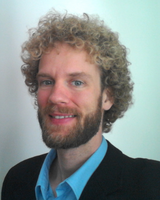 Testing drugs that activate muscle stem cells to treat muscular dystrophy
Testing drugs that activate muscle stem cells to treat muscular dystrophy
Dr. Florian Bentzinger, Université de Sherbrooke
Dr. Florian Bentzinger’s SCN-funded research focuses on the hormone Apelin that is highly efficient at stimulating muscle stem cells to multiply and form new tissue. His team is testing drug candidates for their ability to increase Apelin in models of muscular dystrophy and is in the process of filing a patent for the treatment of Duchenne muscular dystrophy (DMD) using these drug candidates.
https://www.bentzingerlab.com/
“Stimulating the intrinsic repair capacity of skeletal muscle represents a novel and promising therapeutic avenue for muscular dystrophy.” – Dr. Florian Bentzinger
 Targeting muscle stem cells to develop better therapies for muscular dystrophy
Targeting muscle stem cells to develop better therapies for muscular dystrophy
Dr. Natasha Chang, McGill University
The focus of Dr. Natasha Chang’s SCN-funded project is to investigate how impaired muscle stem cell function leads to diseases like Duchenne muscular dystrophy with the goal of developing better therapies. Dr. Chang and her team are working on a novel approach of targeting mRNA translation mechanisms to enhance stem cell function. Her research is providing proof-of-concept validation in targeting muscle stem cells and enhancing muscle regeneration for the treatment of muscle degenerative diseases, like DMD.
“We are excited about the prospect of enhancing muscle stem cell function to treat muscle degenerative disease. The findings from our Stem Cell Network-funded program will lead to better understanding the role muscle stem cells play in DMD and inform strategies to combine current DMD treatments with stem cell therapy as a holistic therapeutic approach.” – Dr. Natasha Chang
View the full muscular dystrophy profile here.
Rare Heart Diseases
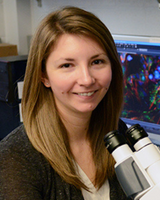 Understanding inherited heart disease in Newfoundland
Understanding inherited heart disease in Newfoundland
Dr. Jessica Esseltine, Memorial University of Newfoundland
Arrhythmogenic right ventricular cardiomyopathy (ARVC) is a heart disease that can cause sudden death as its first symptom. Among an affected group of families in Newfoundland, this disease is caused by an inherited mutation in a specific gene and has come to be known as the “Newfoundland curse.” The exact effects of the genetic mutation are a mystery – why does the disease affect men more than women? Why do some people with the mutation die suddenly, while others with the same mutation can live relatively normal lives? Dr. Esseltine and her team are working to solve this mystery by taking a small skin biopsy from affected patients, turning those skin cells into stem cells called induced pluripotent stem cells (iPSCs), and then using those iPSCs to create beating heart cells that can be closely studied in the lab. The team hopes that the project will result in a better understanding of the biology behind ARVC and ultimately lead to new preventative measures and treatments.
https://www.esseltinelab.com/team
“We have a dedicated group of families invested in helping with our research. Although concentrated within Newfoundland, the heart disease (ARVC) caused by this mutation is seen worldwide. This research will allow us to understand basic ARVC biology, which may lead to new therapies based on understanding the causes of the variation in disease presentation we see, leading to true precision medicine”.– Dr. Jessica Esseltine
 Developing stem cell-based biological pacemakers
Developing stem cell-based biological pacemakers
Dr. Stephanie Protze, University Health Network
The human heartbeat is controlled by the primary pacemaker called the sinoatrial node (SAN). Failure of the SAN, due to diseases or aging, causes a life-threatening slow heartbeat and needs to be treated by implantation of an electronic pacemaker. Approximately 21,000 Canadians receive an electronic pacemaker every year, a number that is steadily increasing with an aging population. Electronic pacemakers have several disadvantages such as the need for battery replacements and the risks of infection and heart failure. Dr. Protze and her team are developing a stem cell-derived biological pacemaker that could overcome these disadvantages by replacing the damaged SAN with new functional pacemaker cells. Before advancing to clinical trials, the team must first perfect methods to grow large numbers of heart pacemaker cells and test them in pre-clinical models of heart disease.
https://www.uhnresearch.ca/researcher/stephanie-protze
“This project will enable us to grow biological pacemakers in the lab, paving the way for future patient-specific disease modelling and drug screening experiments to help us better understand pacemaker disorders and develop new treatment options. Our team hopes to advance the development of biological pacemakers that represent a possible cure, rather than a treatment, for patients with pacemaker diseases in Canada and worldwide”. – Dr. Stephanie Protze
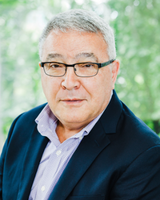 Towards prevention of sudden cardiac arrest in children
Towards prevention of sudden cardiac arrest in children
Dr. Glen Tibbits, Simon Fraser University / BC Children’s Hospital Research Institute
Catecholaminergic Polymorphic Ventricular Tachycardia (CPVT) is a heart disease that carries a high risk of sudden cardiac arrest (SCA) in children. Most children with the disease will experience their first symptoms between 3-16 years old – and 30-50% of those diagnosed with CPVT are likely to die by the age of 35. This condition can be caused by several different genetic variants, which poses a challenge to researchers as every patient might have a different genetic variant and respond differently to treatments. Dr. Tibbits and his team take CPVT patient blood samples and turn them into stem cells called human induced pluripotent stem cells (hiPSCs), and then turn those hiPSCs into beating heart cells that carry the genetic variant so they can study them in the lab. Ultimately, the team hopes to develop personalized treatments for each patient and prevent sudden cardiac arrest and death.
“It can be difficult to pinpoint the exact cause of the heart disease CPVT, which makes it very difficult to develop a treatment protocol for each patient. We currently meet as a group of cardiologists, cardiac physiologists, biologists and geneticists to discuss specific patients and specific variants. However, this work will generate a wealth of data that we hope can be used to develop personalized treatments, providing new hope for patients with this devastating disease”. – Dr. Glen Tibbits
Rare Skin and Eye Diseases
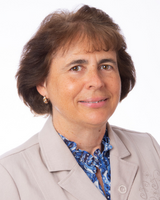 Culturing limbal epithelial stem cells to treat eye diseases for improved eyesight
Culturing limbal epithelial stem cells to treat eye diseases for improved eyesight
Dr. Lucie Germain, Université Laval
Limbal stem cell deficiency (LSCD) is a severe disease caused by damage or depletion of stem cells in the cornea of the eye following trauma or disease. Without treatment, LSCD results in severe visual impairments which impacts the quality of life of patients and their families. It affects a patient’s ability to work, drive and conduct daily activities. Dr. Germain’s team is conducting a multi-center clinical trial testing the ability of a stem cell-based therapy (cultured epithelial corneal autografts, CECA) to treat LSCD. If successful, incorporating this therapy into the standard of care in Canada will mark a major advance in ophthalmology for patients suffering from LSCD, significantly improving their lives.
https://www.crchudequebec.ulaval.ca/en/research/researchers/lucie-germain/
“Our clinical trial, if successful, will provide clinical proof-of-concept for a safe and effective stem cell-based therapy accessible to Canadian opthalmologists and their patients. To-date we have grafted 15 patients with 93% showing good anatomical results 1-year post transplant and 87% with better vision at their last follow-up. We are excited about the potential of this therapy to become the standard of care in Canada, representing a major clinical advancement for patients suffering from LSCD.” – Dr. Lucie Germain
Developing a new, definitive treatment that prevents recurring wounds for a rare skin disease
Dr. Lucie Germain, Université Laval
Recessive dystrophic epidermolysis bullosa (RDEB) is a disease affecting the skin and mucosa. RDEB patients have very fragile skin due to a mutation in the collagen 7 gene leading to widespread blistering that can cause pain, disfigurement, poor quality of life, and other serious medical problems. At present, there is no cure. Roughly 3,000-5,000 Canadians live with this disease. The only option is to treat the recurrent wounds with daily care and bandages, which can be costly. Dr. Germain’s research team is conducting pre-clinical testing of a new approach to treat the disease using stem-cell derived skin substitutes that have been genetically modified to correct the collagen 7 gene mutation. These skin substitutes are then grafted onto damaged skin to accelerate wound healing and regenerate skin. Following successful completion of the pre-clinical studies, Dr. Germain’s team aims to submit a Clinical Trial Application to Health Canada.
https://www.crchudequebec.ulaval.ca/en/research/researchers/lucie-germain/
“Our trial aims to complete the steps necessary for the translation, from the laboratory to the clinic, of a new therapeutic approach combing gene therapy and tissue engineering for recessive dystrophic epidermolysis bullosa. Ultimately, our goal is to develop a definitive treatment for RDEB that will significantly improve the lives of those suffering from this disease.” – Dr. Lucie Germain

